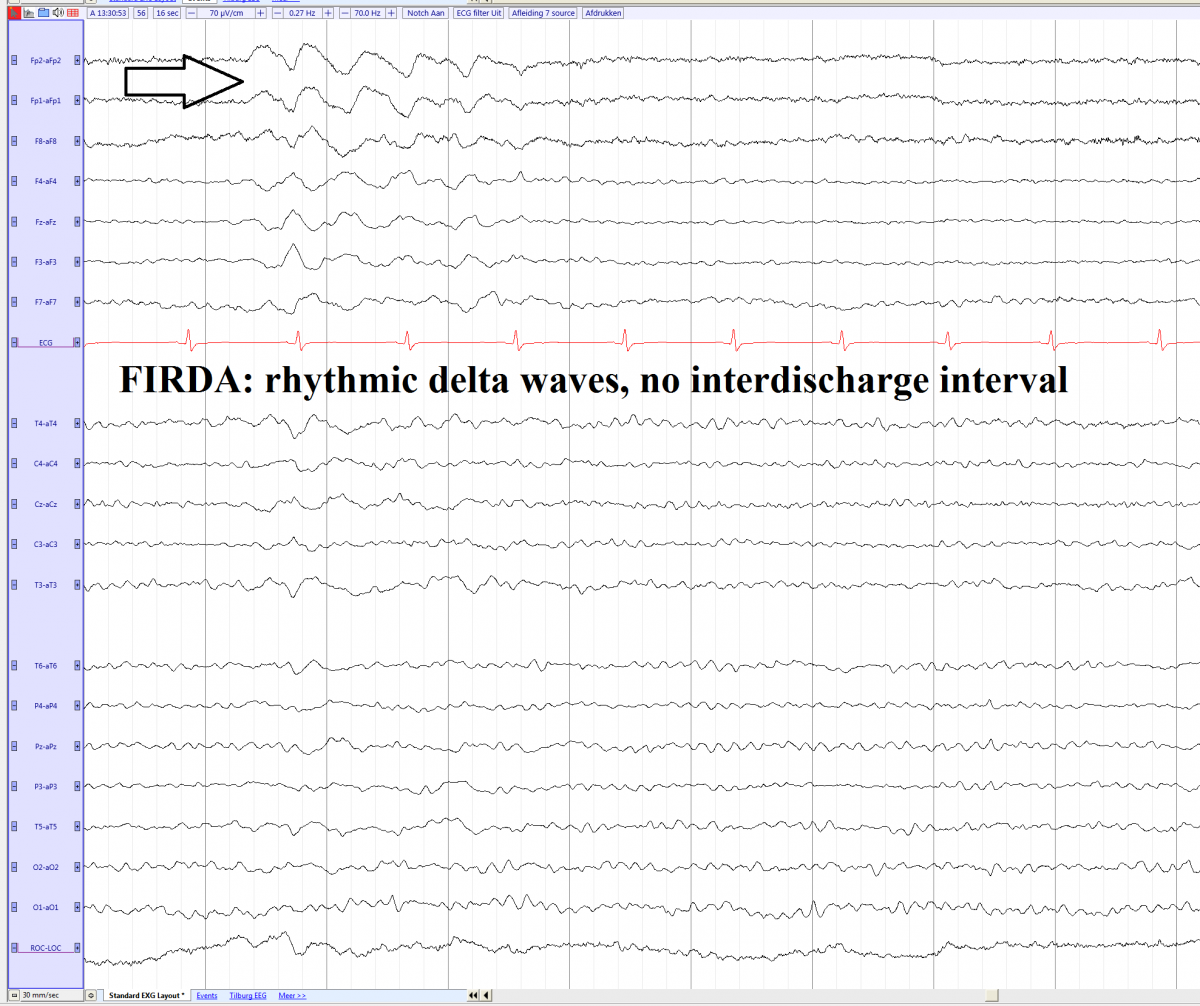Difference between revisions of "FIRDA (frontal intermittent rhythmic delta activity)"
From EEGpedia
(Created page with "*'''F'''rontal *'''I'''ntermittent: In cycles, so not continuous *'''R'''hythmic: Repetition of a waveform with relatively uniform morphology and duration, without an interva...") |
|||
| Line 20: | Line 20: | ||
---- | ---- | ||
''''' FIRDA in a 70 year old male (source)''''' | ''''' FIRDA in a 70 year old male (source)''''' | ||
| − | [[File: FIRDA_(source)_EEGpedia.png|border|1200px]] | + | [[File: FIRDA_(source)_EEGpedia.png|border|1200px|left]] |
---- | ---- | ||
'''Notes''' | '''Notes''' | ||
<references/> | <references/> | ||
Revision as of 10:26, 3 July 2017
- Frontal
- Intermittent: In cycles, so not continuous
- Rhythmic: Repetition of a waveform with relatively uniform morphology and duration, without an interval between consecutive waveforms.
- Delta: Delta waves
- Activity
- The FIRDA can be more specified with the prevalence, duration, frequency, amplitude, stimulus-induced (SI), Evolving OR Fluctuating (both terms refer to changes in either frequency, location or morphology).
- If a more ictal appearance it can be categorized as FIRDA+:[1]
- +F: superimposed fast activity.
- +S: superimposed sharp waves or spikes, or sharply contoured.
- +FS: superimposed fast activity and sharp waves or spikes, or sharply contoured.
Clinical relevance:
- Often due to global cerebral dysfunction (e.g. metabolic-, toxic- encephalopathy, traumatic)
- FIRDA is rarely due to a subcortical dysfunction/lesion (e.g. lewy body dementia) or elevated intracranial pressure.
- A small amount of FIRDA, especially when it is restricted to drowsiness, can be a normal in elderly or children.
FIRDA in a 70 year old male (source)
Notes
- ↑ ACNS STANDARDIZED ICU EEG NOMENCLATURE v. 2012
